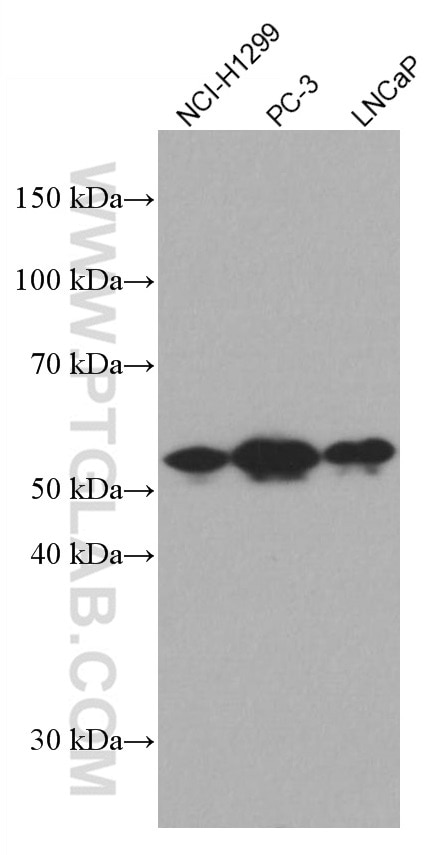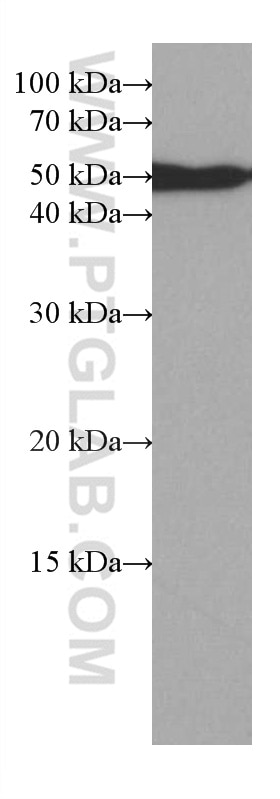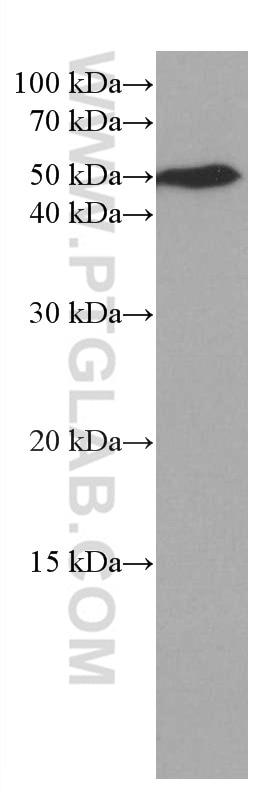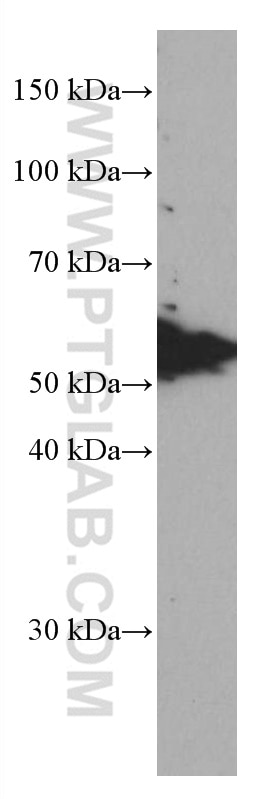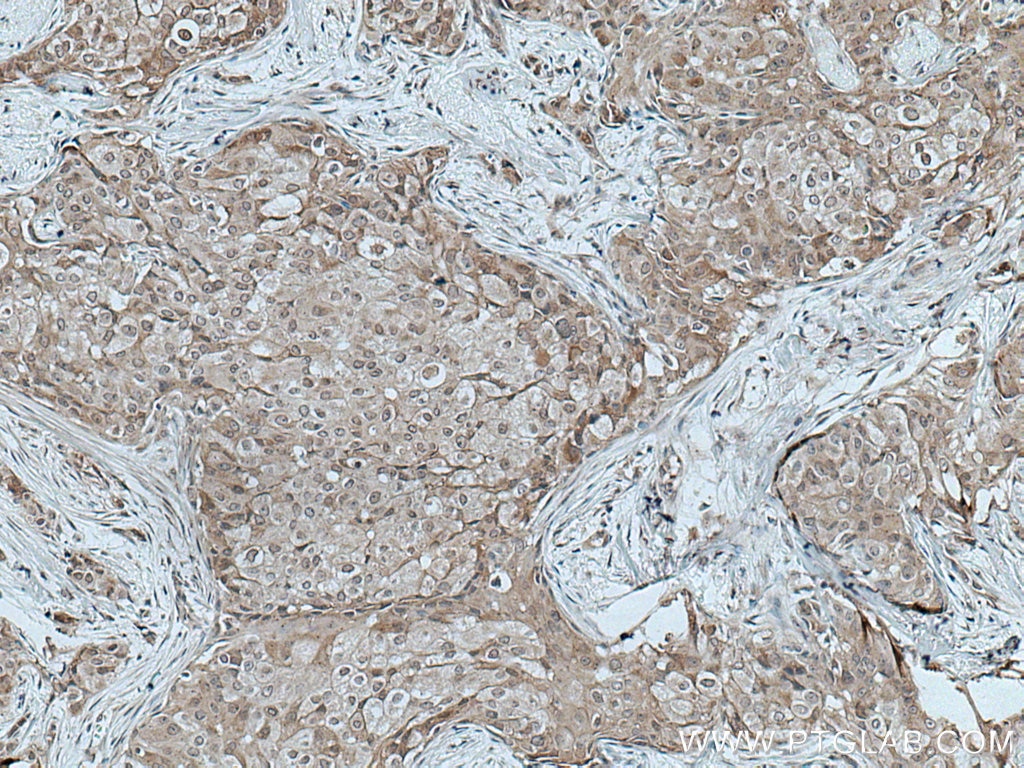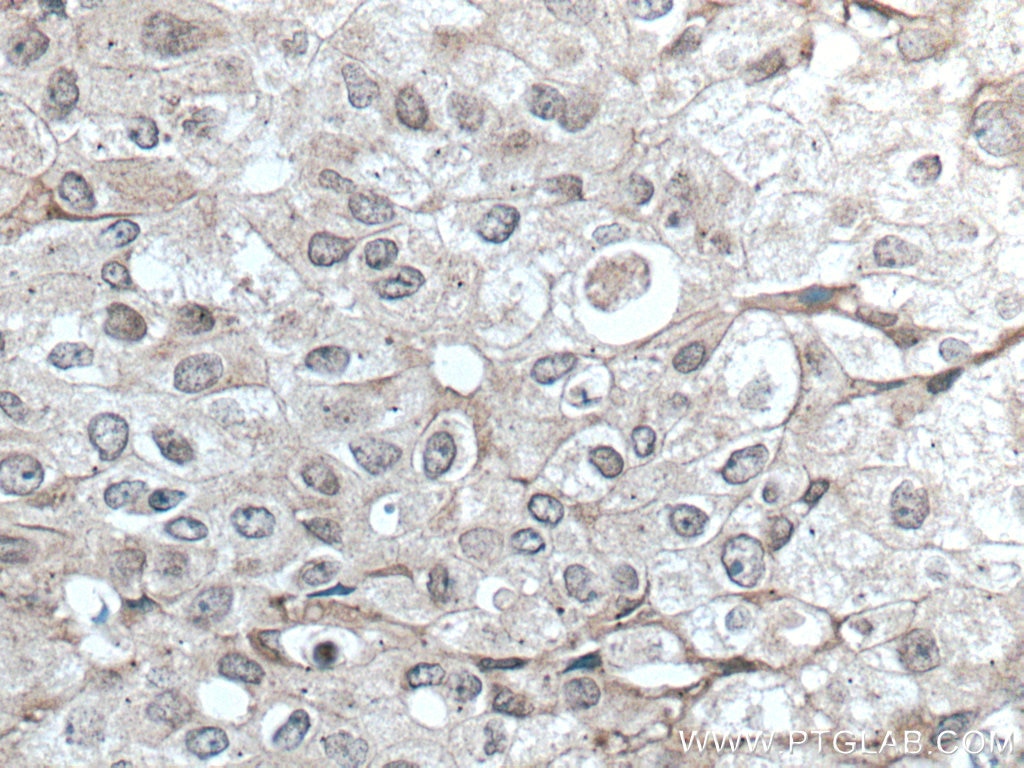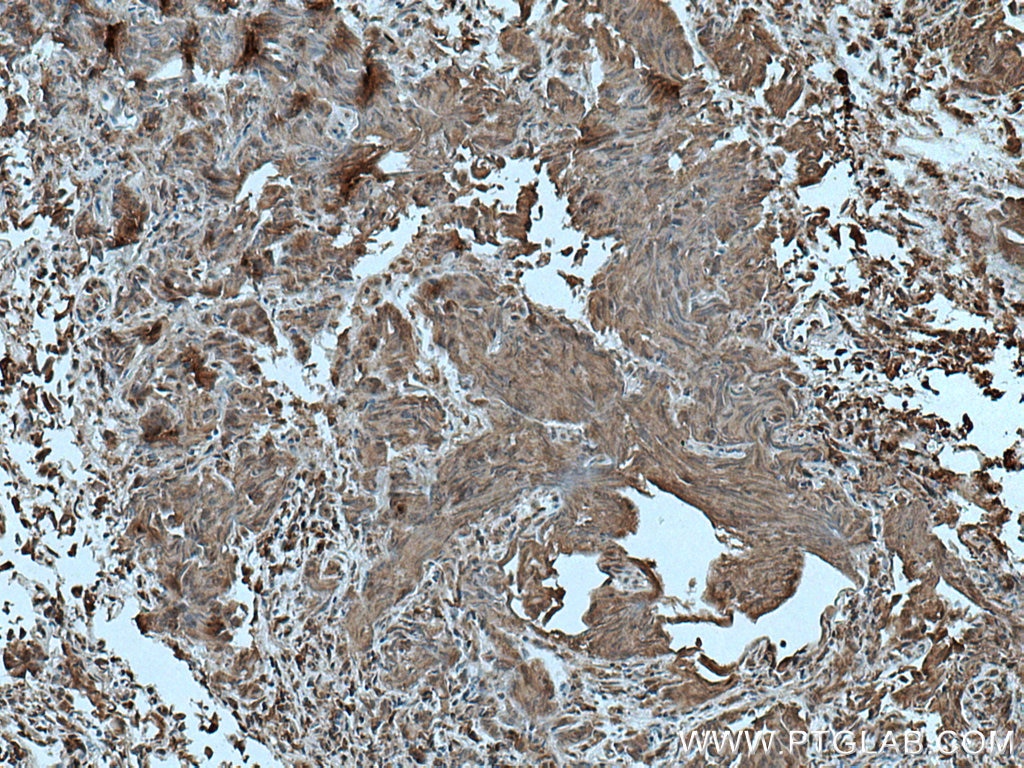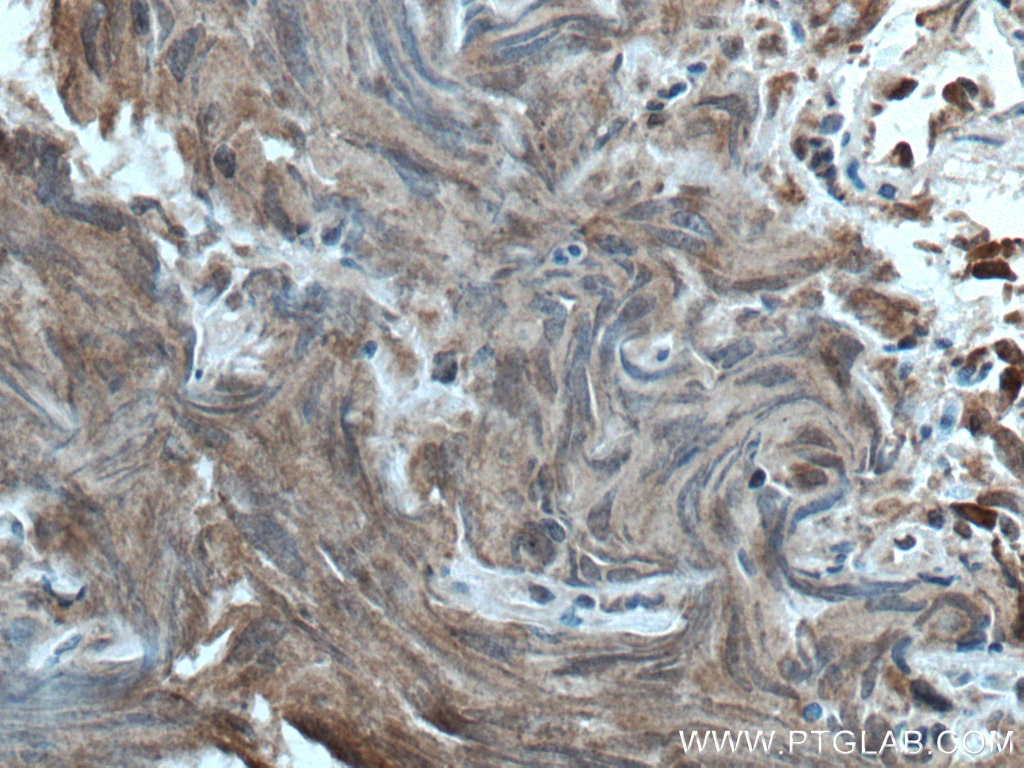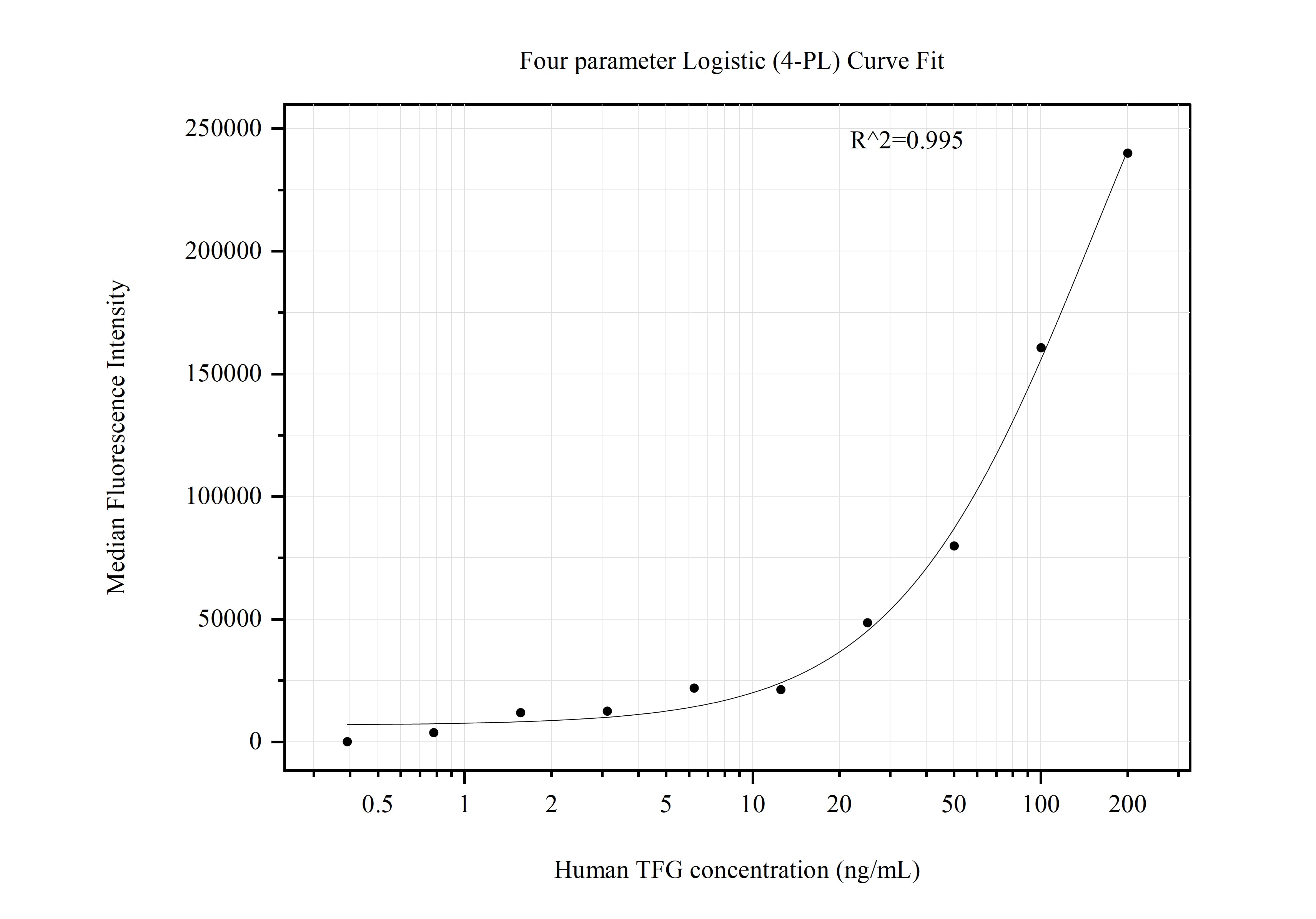Validation Data Gallery
Tested Applications
Recommended dilution
| Application | Dilution |
|---|---|
| It is recommended that this reagent should be titrated in each testing system to obtain optimal results. | |
Product Information
66916-1-PBS targets TFG as part of a matched antibody pair:
MP50894-1: 66916-1-PBS capture and 66916-2-PBS detection (validated in Cytometric bead array)
Unconjugated mouse monoclonal antibody pair in PBS only (BSA and azide free) storage buffer at a concentration of 1 mg/mL, ready for conjugation.
This conjugation ready format makes antibodies ideal for use in many applications including: ELISAs, multiplex assays requiring matched pairs, mass cytometry, and multiplex imaging applications.Antibody use should be optimized by the end user for each application and assay.
| Tested Reactivity | human, pig |
| Host / Isotype | Mouse / IgG2b |
| Class | Monoclonal |
| Type | Antibody |
| Immunogen |
CatNo: Ag27697 Product name: Recombinant human TFG protein Source: e coli.-derived, PET28a Tag: 6*His Domain: 1-208 aa of BC023599 Sequence: MNGQLDLSGKLIIKAQLGEDIRRIPIHNEDITYDELVLMMQRVFRGKLLSNDEVTIKYKDEDGDLITIFDSSDLSFAIQCSRILKLTLFVNGQPRPLESSQVKYLRRELIELRNKVNRLLDSLEPPGEPGPSTNIPENDTVDGREEKSASDSSGKQSTQVMAASMSAFDPLKNQDEINKNVMSAFGLTDDQVSGPPSAPAEDRSGTPD 相同性解析による交差性が予測される生物種 |
| Full Name | TRK-fused gene |
| Calculated molecular weight | 400 aa, 43 kDa |
| Observed molecular weight | 50-55 kDa |
| GenBank accession number | BC023599 |
| Gene Symbol | TFG |
| Gene ID (NCBI) | 10342 |
| RRID | AB_2882243 |
| Conjugate | Unconjugated |
| Form | |
| Form | Liquid |
| Purification Method | Protein A purification |
| UNIPROT ID | Q92734 |
| Storage Buffer | PBS only{{ptg:BufferTemp}}7.3 |
| Storage Conditions | Store at -80°C. |
Background Information
Protein TFG (TRK-fused gene protein) plays a role in regulating phosphotyrosine-specific phosphatase-1 activity. Mutations in TFG may have important clinical relevance for current therapeutic strategies to treat metastatic melanoma. Defects in TFG are a cause of thyroid papillary carcinoma (TPC), a common tumor of the thyroid that typically arises as an irregular, solid or cystic mass from otherwise normal thyroid tissue. Hereditary motor and sensory neuropathy with proximal dominant involvement (HMSN-P) is an autosomal-dominant neurodegenerative disorder characterized by widespread fasciculations, proximal-predominant muscle weakness, and atrophy followed by distal sensory involvement. Recent genetic investigation indicates that formation of TFG-containing cytoplasmic inclusions and concomitant mislocalization of TAR DNA-binding protein 43 kDa (TDP-43) underlie motor neuron degeneration in HMSN-P. Pathological overlap of proteinopathies involving TFG and TDP-43 highlights a new pathway leading to motor neuron degeneration.

